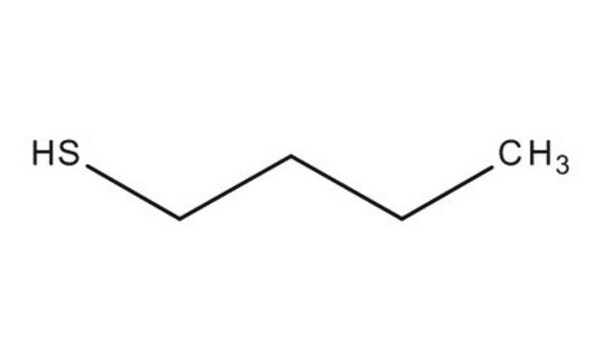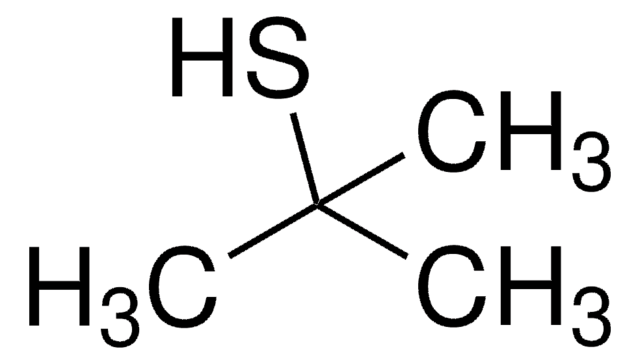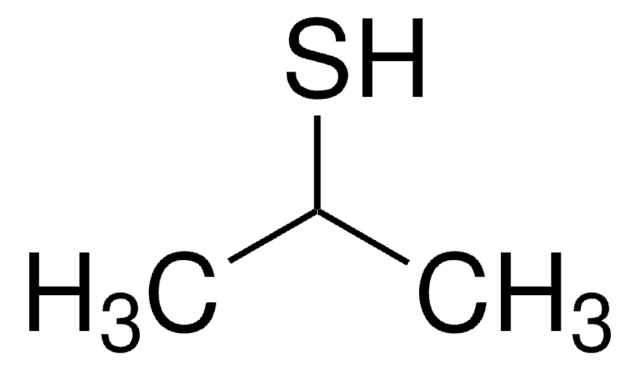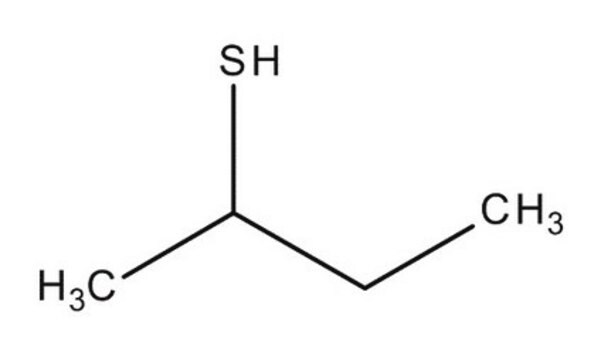112925
1-Butanethiol
99%
Synonyme(s) :
Butyl mercaptan, Mercaptan C4
About This Item
Produits recommandés
Densité de vapeur
3.1 (vs air)
Niveau de qualité
Pression de vapeur
83 mmHg ( 37.7 °C)
Pureté
99%
Indice de réfraction
n20/D 1.443 (lit.)
Point d'ébullition
98 °C (lit.)
Pf
−116 °C (lit.)
Densité
0.842 g/mL at 25 °C (lit.)
Groupe fonctionnel
thiol
Chaîne SMILES
CCCCS
InChI
1S/C4H10S/c1-2-3-4-5/h5H,2-4H2,1H3
Clé InChI
WQAQPCDUOCURKW-UHFFFAOYSA-N
Vous recherchez des produits similaires ? Visite Guide de comparaison des produits
Application
Mention d'avertissement
Danger
Mentions de danger
Classification des risques
Acute Tox. 4 Inhalation - Acute Tox. 4 Oral - Eye Irrit. 2 - Flam. Liq. 2 - Skin Irrit. 2 - Skin Sens. 1 - STOT SE 3
Organes cibles
Respiratory system
Code de la classe de stockage
3 - Flammable liquids
Classe de danger pour l'eau (WGK)
WGK 3
Point d'éclair (°F)
53.6 °F - closed cup
Point d'éclair (°C)
12 °C - closed cup
Équipement de protection individuelle
Eyeshields, Faceshields, Gloves, type ABEK (EN14387) respirator filter
Faites votre choix parmi les versions les plus récentes :
Déjà en possession de ce produit ?
Retrouvez la documentation relative aux produits que vous avez récemment achetés dans la Bibliothèque de documents.
Les clients ont également consulté
Articles
Self-assembled monolayers (SAMs) have attracted enormous interest for a wide variety of applications in micro- and nano-technology. In this article, we compare the benefits of three different classes of SAM systems (alkylthiolates on gold).
Notre équipe de scientifiques dispose d'une expérience dans tous les secteurs de la recherche, notamment en sciences de la vie, science des matériaux, synthèse chimique, chromatographie, analyse et dans de nombreux autres domaines..
Contacter notre Service technique











